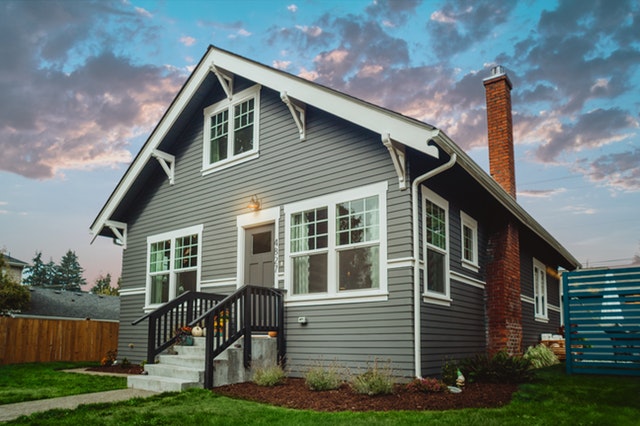Case-Shiller: July Home Price Growth Hits Lowest Pace in 12 Years
 Case-Shiller’s National Home Price Index reported U.S. home prices grew by 3.20 percent year-over-year in July; as compared to year-over-year home price growth 0f 3.00 percent posted in June. Cities with the highest rates of year-over-year home price growth were Phoenix, Arizona with 5.80 percent year-over-year home price growth. Las Vegas, Nevada had 4.70 percent year-over-year home price appreciation and Charlotte, North Caroline bumped Tampa, Florida from the top three cities with home price appreciation of 4.60 percent. Tampa, Florida posted 4.50 percent year-over-year home price growth in July.
Case-Shiller’s National Home Price Index reported U.S. home prices grew by 3.20 percent year-over-year in July; as compared to year-over-year home price growth 0f 3.00 percent posted in June. Cities with the highest rates of year-over-year home price growth were Phoenix, Arizona with 5.80 percent year-over-year home price growth. Las Vegas, Nevada had 4.70 percent year-over-year home price appreciation and Charlotte, North Caroline bumped Tampa, Florida from the top three cities with home price appreciation of 4.60 percent. Tampa, Florida posted 4.50 percent year-over-year home price growth in July.
Home Price Growth Stalls In West
14 cities had higher home price gains than in June and Seattle, Washington was the only city in the 20-City Index to post lower home prices. Analysts said that after years of rapid and unsustainable growth in home prices on the West Coast coupled with economic expansion and job growth in areas with lower home prices. July readings for home-price growth in western cities that posted double-digit price growth percentages in recent years were far lower. Home prices in Portland, Oregon rose 2.50 percent year-over-year; Los Angeles, California home prices rose 1.10 percent and San Francisco, California posted year-over-year home price growth of 0.20 percent.
High Home Prices Ease Demand Caused By Low Supply Of Homes For Sale
As home prices in many markets skyrocketed, would-be buyers were sidelined by affordability cash buyers and strict mortgage loan requirements. With home prices stabilizing and mortgage rates at near-record lows, more buyers will likely enter the market. This would increase demand on already slim supplies of homes for sale and cause home prices to rise at a faster pace than they have in 2019. Current rates of home price growth remain higher than current inflation and wage growth, but are low enough to encourage home buyers who were previously unable to keep up with rapidly rising home prices.
Seven cities posted higher rates of home price growth year-over-year in July as compared to readings for year-over-year home price growth from June 2018 to June 2019. The National Association of Realtors® said that sales of pre-owned homes were higher in July for the first time in months. The supply of available homes tightened in June; this trend is expected to boost home prices as demand for homes increases.

 The Federal Reserve’s Federal Open Market Committee reduced its key short-term interest rate range one-quarter percent to 1.75 to 2.00 percent during it’s September meeting. While FOMC members had mixed opinions on reducing the benchmark rate range for short term loans, the post-meeting statement suggested that reducing the federal funds rate was a hedge against inflation. The federal funds rate impacts short-term consumer loan rates for autos and adjustable rate mortgages, but does not impact fixed mortgage rates. FOMC monetary policy decisions are governed by the Federal Reserve’s dual mandate of maintaining price stability and an inflation rate of 2.00 percent.
The Federal Reserve’s Federal Open Market Committee reduced its key short-term interest rate range one-quarter percent to 1.75 to 2.00 percent during it’s September meeting. While FOMC members had mixed opinions on reducing the benchmark rate range for short term loans, the post-meeting statement suggested that reducing the federal funds rate was a hedge against inflation. The federal funds rate impacts short-term consumer loan rates for autos and adjustable rate mortgages, but does not impact fixed mortgage rates. FOMC monetary policy decisions are governed by the Federal Reserve’s dual mandate of maintaining price stability and an inflation rate of 2.00 percent. The National Association of Home Builders Housing Market Index shows steady builder confidence in housing market conditions. September’s index reading of 68 was one point higher than August’s reading. Any reading over 50 indicates that most home builders surveyed view housing market conditions as favorable. August’s original index reading was adjusted upward by one point.
The National Association of Home Builders Housing Market Index shows steady builder confidence in housing market conditions. September’s index reading of 68 was one point higher than August’s reading. Any reading over 50 indicates that most home builders surveyed view housing market conditions as favorable. August’s original index reading was adjusted upward by one point. Home price growth continued to slow in June according to Case-Shiller’s 20-City Home Price Index. 17 cities reported higher home prices in June, but three cities reported lower home prices month-to-month. Seattle, Washington was the only city to report lower home prices year-over-year in June.
Home price growth continued to slow in June according to Case-Shiller’s 20-City Home Price Index. 17 cities reported higher home prices in June, but three cities reported lower home prices month-to-month. Seattle, Washington was the only city to report lower home prices year-over-year in June. Home price growth slowed again in May according to Case-Shiller home price indices. Home price growth slowed for the 14th consecutive month to its lowest rate in 12 years. Case-Shiller’s National Home Price Index showed 3.40 percent growth year-over-year in May as compared to April’s year-over-year reading of 3.50 percent.
Home price growth slowed again in May according to Case-Shiller home price indices. Home price growth slowed for the 14th consecutive month to its lowest rate in 12 years. Case-Shiller’s National Home Price Index showed 3.40 percent growth year-over-year in May as compared to April’s year-over-year reading of 3.50 percent.